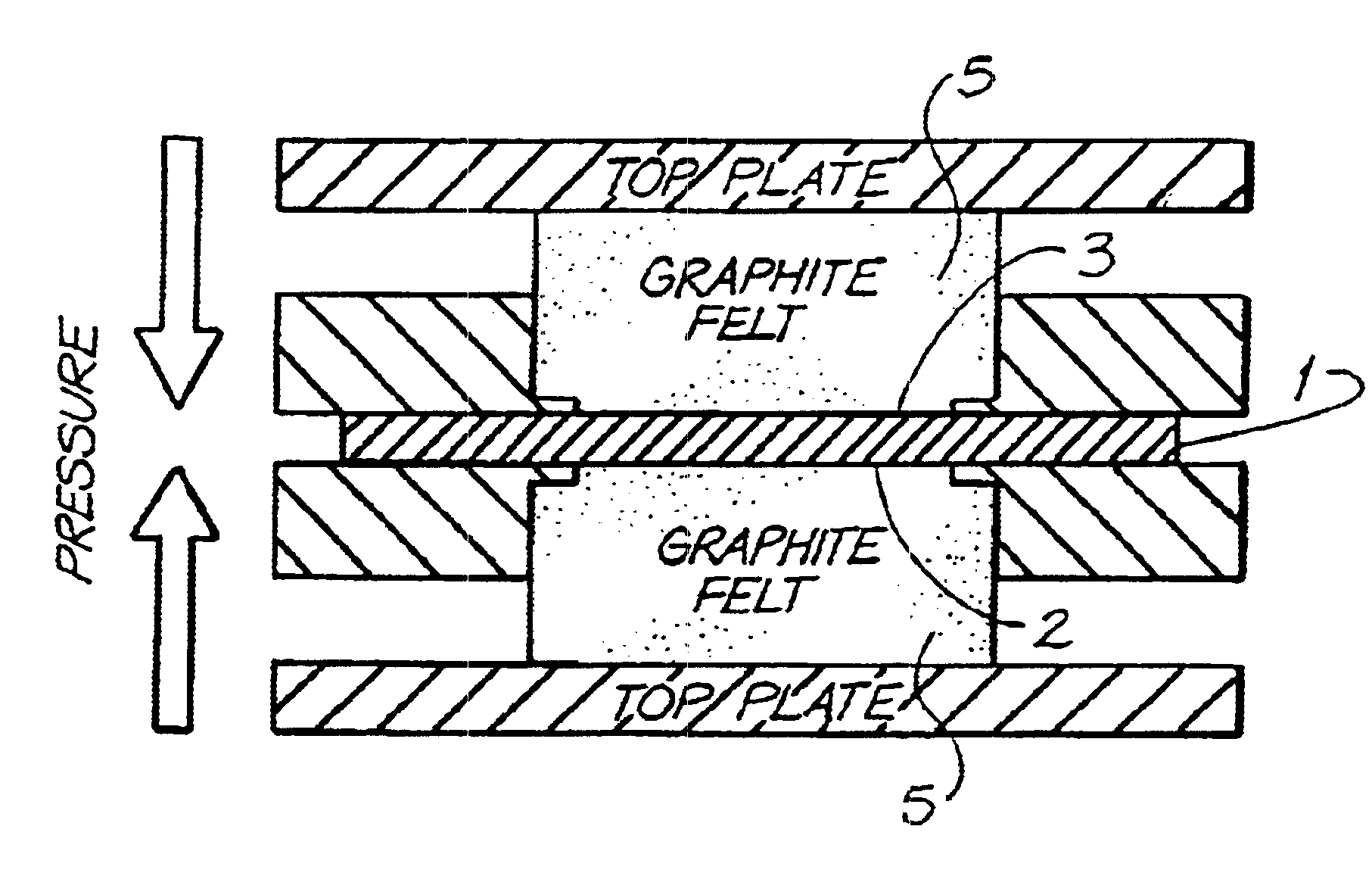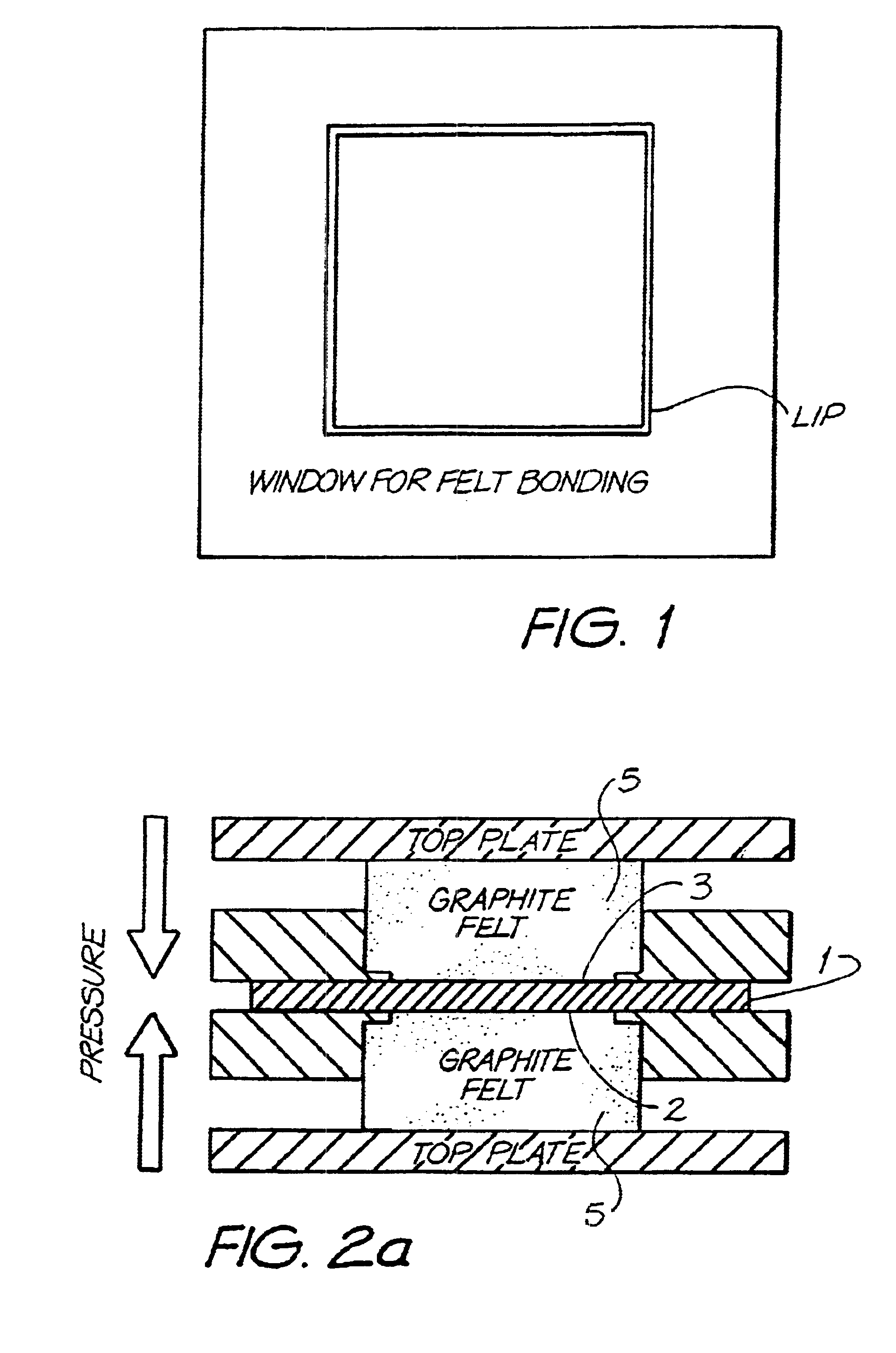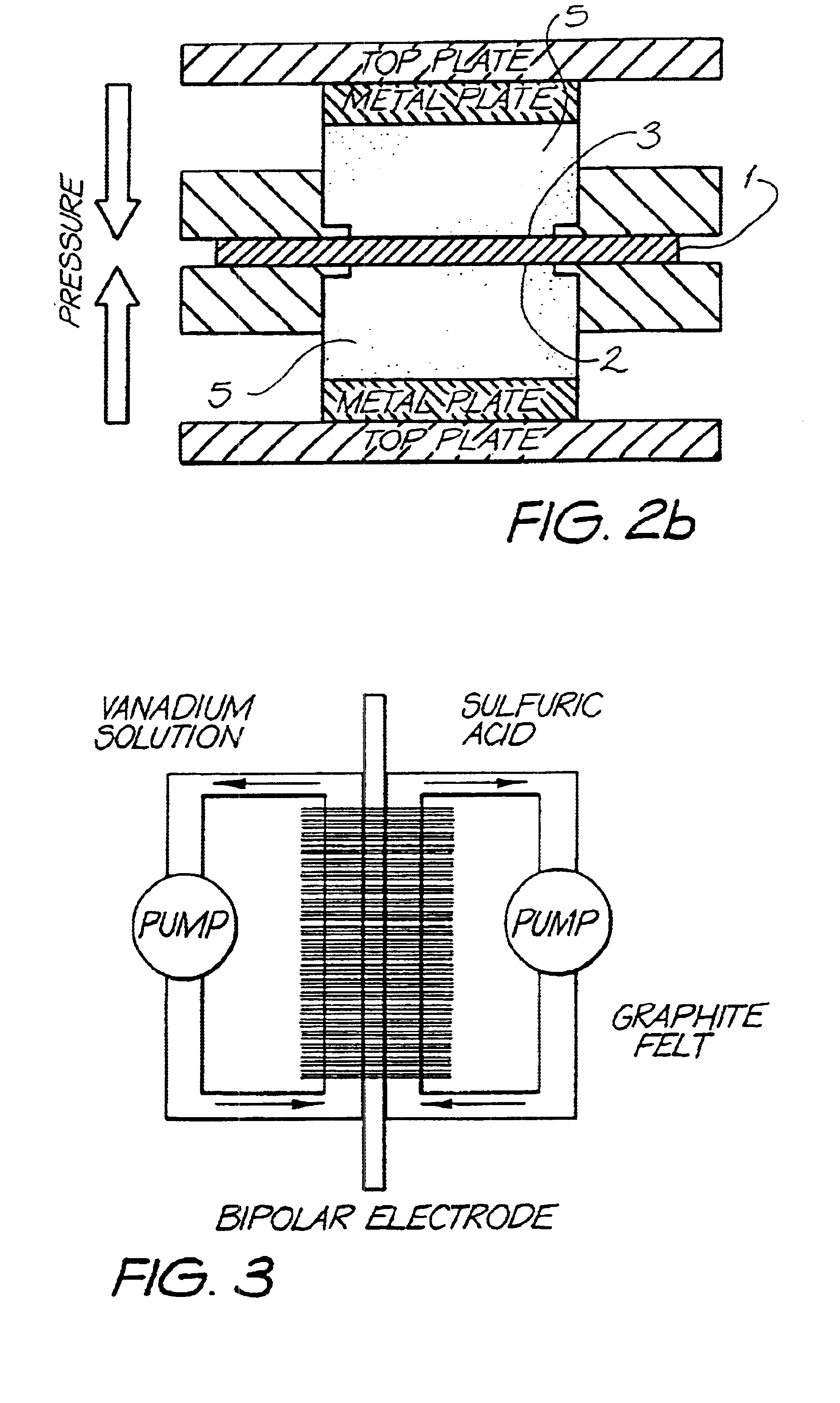Bipolar electrode having non-conductive electrode substrate and fibrous electrochemically active material
a non-conductive, electrode-based technology, applied in the direction of electrochemical generators, cell components, flat cells, etc., can solve the problems of conductive polymers unsuitable for use as bipolar or end electrodes, relatively poor electrochemical activity of conducting plastic composite electrode materials, and since being replaced, etc., to achieve good mechanical properties, high electrochemical activity, and high conductivity
- Summary
- Abstract
- Description
- Claims
- Application Information
AI Technical Summary
Benefits of technology
Problems solved by technology
Method used
Image
Examples
examples
Basic Electrode Substrate Material
Material A)
HDPE sheets produced by means of compression moulding of HDPE-powder was used for the preparation of carbon black free bipolar graphite felt electrodes. As HDPE-powder, GA 7260H powder, Kemcor Australia was used. The sheets were pressed for 10 minutes in an aluminium mould with the inner mould dimensions of 110.times.100.times.1 mm (l.times.w.times.h) under a pressure of 43 kg / cm.sup.2 and a temperature of 155.degree. C. The mould was preheated for 10 minutes before applying the pressure. After pressing, the mould was quenched in a cold water tank. The physical properties of the obtained polymer sheets are given in Table I.
Material C)
Extruded LDPE-material provided by E-PLAS PTY. LTD., AUSTRALIA with a thickness of 1 mm was used as sheet material for electrode preparation. Physical properties are given in Table I.
Material D)
LDPE sheets produced by means of compression moulding of LDPE-granule was used for the preparation of carbon black f...
examples 1a and 1b
Material A was used as a substrate in the above described felt bonding process I. Felt bonding times were 10 minutes (sample 1a) and 20 minutes (sample 1b). The results of the area resistivity measurements (Test I) are shown in FIG. 6. Electrodes of type 1a were used for permeability tests (Test II and III) which showed no permeability of Vanadium electrolyte during 3 months for Test II and 3weeks for Test III (Experiment was stopped after this period). The set up for permeability Test III is illustrated in FIG. 3. Electrodes of type 1a were also used for overcharging experiments according to Test IV. The carbon black free bipolar electrodes of the invention showed only a small increase of resistance after overcharging (R.sub.OC) and reversibility of the overcharging products after reverse set up (R.sub.rev). Results are shown in Table III. Furthermore, the 1a electrodes were used for evaluation of cell performance described under Test V. These results are illustrated in Table IV. C...
examples 2a-2d
Material C was used as a substrate in the above prescribed felt bonding process I. Felt bonding times were 10 (samples 2a), 20 (sample 2b), 30 (sample 2c) and 40 minutes (sample 2d). Area resistivity measurements (Test I) of the produced electrodes are illustrated in FIG. 6 and show constantly and reasonable low conductivities just for electrodes of type 2d. Due to the required long process times comparable to electrodes of type 1a no further testing (Tests II-V) was performed.
PUM
| Property | Measurement | Unit |
|---|---|---|
| Angle | aaaaa | aaaaa |
| Molar density | aaaaa | aaaaa |
| Molar density | aaaaa | aaaaa |
Abstract
Description
Claims
Application Information
 Login to View More
Login to View More - R&D
- Intellectual Property
- Life Sciences
- Materials
- Tech Scout
- Unparalleled Data Quality
- Higher Quality Content
- 60% Fewer Hallucinations
Browse by: Latest US Patents, China's latest patents, Technical Efficacy Thesaurus, Application Domain, Technology Topic, Popular Technical Reports.
© 2025 PatSnap. All rights reserved.Legal|Privacy policy|Modern Slavery Act Transparency Statement|Sitemap|About US| Contact US: help@patsnap.com



